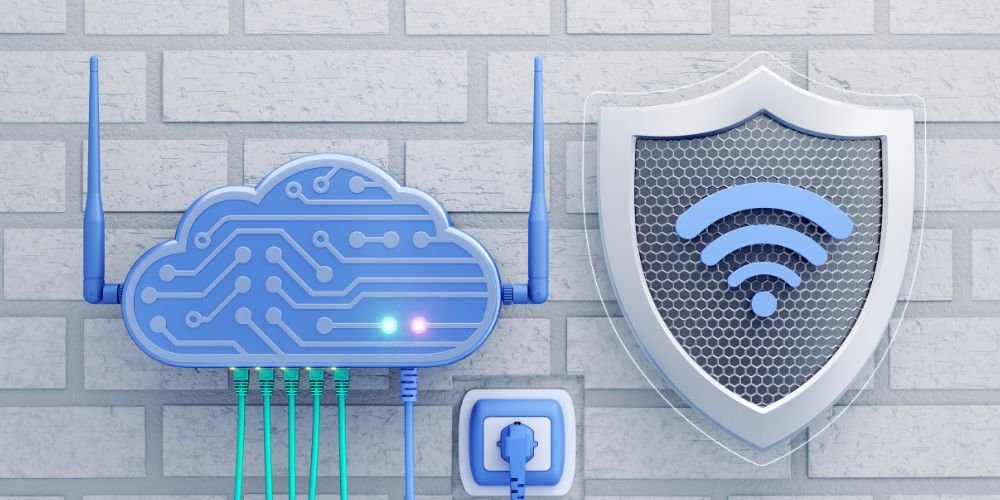Public Wi-Fi networks are convenient, allowing us to stay connected while on the go. However, they can also be risky, exposing users to cyber threats such as data theft, malware attacks, and identity fraud. To protect yourself while using public Wi-Fi, following the best security practices is essential. This guide provides a comprehensive approach to using public Wi-Fi securely, ensuring that your data and privacy remain intact.
Understanding the Risks of Public Wi-Fi
Public Wi-Fi networks, such as those in coffee shops, airports, or hotels, are often unsecured and easy targets for cybercriminals. Understanding the risks associated with using these networks can help you take appropriate precautions.
The Dangers of Unsecured Networks
Public Wi-Fi networks are usually open and lack encryption, which makes it easier for attackers to intercept data traveling between your device and the network. It means that any data you send or receive, such as login credentials or personal information, can be exposed to hackers.
- Man-in-the-Middle (MitM) Attacks: In a MitM attack, hackers position themselves between you and the public Wi-Fi network, intercepting communications without your knowledge.
- Data Theft: Cybercriminals can steal sensitive information, such as passwords, credit card numbers, or personal messages, from unsecured Wi-Fi connections.
- Malware Distribution: Malware can be distributed to your device through public Wi-Fi networks, especially if you unknowingly download infected files or click on compromised links.
Fake Wi-Fi Networks
Cybercriminals can create fake public Wi-Fi networks, mimicking the names of legitimate networks (such as “Coffee_Shop_WiFi”) to trick users into connecting. Once connected, attackers can monitor your activity and steal sensitive information.
- Rogue Access Points: These are fraudulent Wi-Fi hotspots set up by attackers to capture the data of unsuspecting users.
- Evil Twin Networks: Hackers clone the network name of a legitimate Wi-Fi to lure users in and gain access to their devices and sensitive information.
Use a Virtual Private Network (VPN)
A VPN is one of the most effective tools for securing your connection to public Wi-Fi. It encrypts all the data transmitted between your device and the internet, making it difficult for attackers to intercept or read your information.
How a VPN Works
A VPN creates a secure, encrypted tunnel between your device and the server the VPN provider operates. This encryption scrambles your data, ensuring that even if it’s intercepted, anyone cannot read it without the encryption key.
- Encrypt Your Internet Traffic: VPNs ensure that all data leaving your device is encrypted, making it virtually impossible for attackers to decipher.
- Anonymize Your IP Address: VPNs mask your IP address by routing your traffic through a server in another location, adding an extra layer of privacy.
Choosing the Right VPN
Many VPN services are available, but not all provide the same level of security or performance. When selecting a VPN for public Wi-Fi, look for these key features:
- Strong Encryption: Choose a VPN with at least 256-bit encryption for maximum security.
- No-Log Policy: Ensure the VPN provider does not keep logs of your activity, protecting your privacy.
- Wide Server Network: A large network of servers in different countries helps you maintain fast and reliable connections.
Avoid Accessing Sensitive Information
Public Wi-Fi should be used primarily for casual browsing. Avoid accessing sensitive accounts or conducting financial transactions when connected to unsecured networks.
Limit Access to Personal Accounts
If you need public Wi-Fi, avoid logging into personal accounts containing sensitive information, such as your bank, email, or social media accounts.
- Online Banking: Always avoid online banking or financial transactions on public Wi-Fi unless necessary. These activities should be conducted on secure, private networks.
- Work Emails or Accounts: Refrain from accessing corporate accounts or sending confidential information while connected to public Wi-Fi.
Use HTTPS Websites
Ensure that the websites you visit over public Wi-Fi use HTTPS, which encrypts the data exchanged between your browser and the website. Most modern browsers display a padlock symbol in the address bar, indicating the site is secure.
- Look for the Padlock Symbol: This symbol ensures that the website uses HTTPS, providing an additional layer of encryption.
- Avoid HTTP Websites: Sites that only use HTTP are not secure, as data transmitted to and from the site is vulnerable to interception.
Disable File Sharing and Bluetooth
Cybercriminals can exploit file sharing and Bluetooth to access your device while you’re connected to public Wi-Fi. Turning off these features helps reduce the risk of unauthorized access.
Disable File Sharing on Your Device
File sharing allows other devices to access files on your computer, which can be a security risk on public Wi-Fi networks. Make sure to turn off file sharing before connecting to public Wi-Fi.
- Turn Off Sharing Features: Go to your system’s settings and turn off features like “File Sharing,” “Printer Sharing,” and “Network Discovery” to prevent other users on the same network from accessing your files.
- Use Airplane Mode for Bluetooth Devices: If you don’t need Bluetooth, switch your device to airplane mode or turn off Bluetooth to prevent unwanted connections.
Use Firewalls for Extra Protection
Enabling your device’s firewall adds protection by blocking unauthorized access from public Wi-Fi networks.
- Enable Built-In Firewalls: Most operating systems come with a built-in firewall. Ensure that your firewall is turned on to help prevent cybercriminals from accessing your device.
- Use Third-Party Firewalls for Enhanced Security: Consider using third-party firewall software for extra protection and advanced configuration options if necessary.
Keep Your Software and Devices Updated
Keeping your device’s operating system, apps, and security software updated ensures you have the latest security patches and protections against known vulnerabilities.
Why Updates Matter
Cybercriminals frequently exploit vulnerabilities in outdated software to launch attacks. Keeping your software up to date reduces the risk of being targeted by such attacks.
- Install Security Patches Promptly: Security patches fix known vulnerabilities in your device’s operating system or apps. Make sure to install them as soon as they are released.
- Use Automatic Updates: Enable automatic updates on your devices to ensure you always have the latest security improvements.
Update Your Security Software
In addition to keeping your operating system up to date, ensure your antivirus and anti-malware software are also current.
- Run Regular Security Scans: Use your antivirus software to perform regular scans and detect potential threats on your device.
- Configure Automatic Scans: Set up automatic security scans to run regularly, especially after connecting to public Wi-Fi networks.
Log Out of Accounts and Forget the Network
When you’re finished using public Wi-Fi, log out of any accounts you’ve accessed and disconnect from the network.
Log Out of Sensitive Accounts
After using public Wi-Fi, always log out of accounts that contain personal or sensitive information, such as email or social media accounts. It reduces the chance of unauthorized access if your device is compromised.
- Avoid Saving Login Credentials: Disable settings that automatically save your passwords or keep you logged into accounts, especially when using public Wi-Fi.
Forget the Public Wi-Fi Network
To prevent your device from automatically reconnecting to a public Wi-Fi network in the future, go to your device’s Wi-Fi settings and choose to “forget” the network.
- Disable Auto-Connect: Turn off auto-connect settings for Wi-Fi networks to avoid automatically joining unsecured networks without your knowledge.
- Manually Reconnect When Needed: By manually connecting to public Wi-Fi, you can ensure that you are only joining secure, trusted networks.
Conclusion
Using public Wi-Fi securely requires careful attention to your online activity and device settings. You can minimize the risks associated with public networks by employing strong security practices—such as using a VPN, avoiding sensitive transactions, turning off unnecessary features, keeping your software updated, and logging out of accounts. As public Wi-Fi remains a popular way to stay connected, taking proactive steps to protect your data and privacy ensures a safer and more secure browsing experience.












